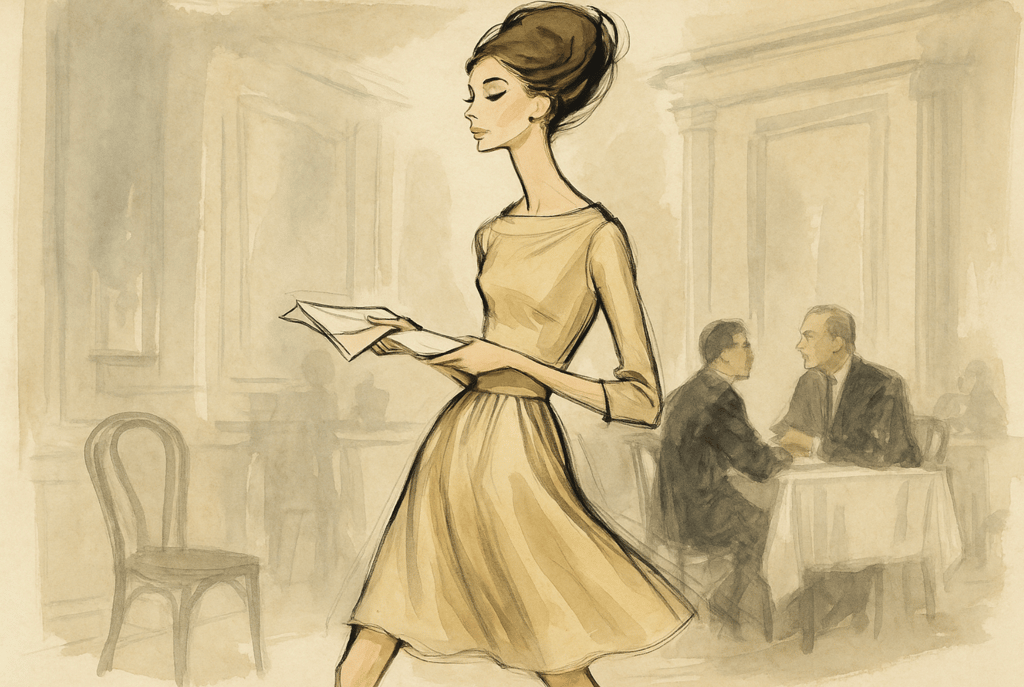The Napkin: A Short History of Manners and Shame
In Victorian society, the napkin was more than practical—it was a test of class and self-control. Discover how folding it correctly could define a man’s social standing.
FOOD HISTORY & TRADITIONS


Most of us today treat the napkin as a practical afterthought—a square of fabric or paper meant to catch spills and wipe crumbs from our mouths. But in the 19th century, especially during the height of the Victorian era, the napkin was more than just a tool of cleanliness. It was a symbol of social standing, refinement, and self-control. How a man handled his napkin could make or break his reputation in polite society.
Victorian etiquette manuals didn’t leave much to chance. They taught men exactly how to unfold a napkin, where to place it when they sat, and how to signal they were finished with their meal—all in a bid to avoid the ultimate social sin: appearing vulgar or uncivilised.
From Utility to Symbol: How the Napkin Gained Status
Napkins themselves had existed for centuries. Ancient Romans used mappae—linen cloths for wiping hands or wrapping leftovers—and the French aristocracy of the 17th century elevated them with elaborate embroidery and folds. But it was the Victorians who turned the napkin into a test of character.
In an era obsessed with codifying manners, every detail of dining became a marker of breeding. The napkin, once purely functional, evolved into a tool for sorting the refined from the rough. To fold and use it correctly showed not only polish but also self-discipline, a prized Victorian virtue.
Etiquette writers of the day claimed that table habits reflected inner morality. A gentleman who unfolded his napkin too sharply (“never snap it,” one manual warned) or left it balled up at the end of the meal signalled haste, clumsiness, or a lack of upbringing. Meanwhile, a neatly folded napkin, placed gracefully to the left of one’s plate after dining, marked one as attentive and well-bred.
The Napkin as a Quiet Test of Masculinity
While women were judged by countless standards in Victorian society, men at the dinner table faced their own silent scrutiny. The napkin became one of the most understated, yet telling, markers of whether a man belonged in the upper echelons of social life.
A gentleman who clumsily tied his napkin around his neck (a habit still common among the working class or older generations) or used it for anything other than discreetly dabbing his mouth risked ridicule. Some hosts and hostesses even delighted in subtle tests, offering oversized, stiffly starched napkins to see how deftly their guests managed without fumbling or discomfort. The ability to handle such a challenge with composure signalled grace under pressure—a trait prized in polite company.
Napkin etiquette also served as a way to differentiate social climbers from the genuinely genteel. Manuals and advice columns warned men hoping to rise in society to study the habits of their hosts carefully: how they placed their napkin when leaving the table, how they kept it on their lap without letting it fall, and how they avoided conspicuous or “vulgar” uses, like wiping one’s face too aggressively or—an unforgivable error—using it as a handkerchief.
When Table Manners Measured Morality
Why did the Victorians care so deeply about such minutiae? For them, manners were moral measures. Proper behaviour at the table indicated self-control, refinement, and respect for those around you. Sloppiness, by contrast, was associated with coarseness, impulsivity, or even dishonesty.
This obsession extended beyond the napkin to every aspect of dining—how one handled utensils, served oneself, and even chewed. But the napkin’s symbolism was particularly striking because it seemed so mundane. A small square of cloth became a canvas for an entire performance of social grace.
For working-class men, many of whom were rising through the ranks of trade and industry, mastering these details was seen as crucial to “fitting in” with the elite. Etiquette manuals became bestsellers, offering precise instructions down to the angle at which a napkin should rest on one’s lap.
Fun Fact: The Oversized Napkin Challenge
Some Victorian hosts, known for their sharp social games, intentionally provided massive, starched napkins to their dinner guests. These unwieldy squares tested a man’s composure; those who fumbled or seemed visibly annoyed revealed a lack of refinement. Those who managed with calm efficiency won silent approval from their hosts and fellow diners.
From Status Symbol to Afterthought
By the early 20th century, as dining customs relaxed and middle-class households adopted more practical habits, the napkin began to lose its status as a moral barometer. Paper napkins, introduced for convenience in the late 19th and early 20th centuries, accelerated its decline as a symbol of refinement.
Today, we still retain echoes of Victorian napkin etiquette—placing it on our laps at the start of a meal, setting it beside the plate when finished—but without the heavy scrutiny. What was once a marker of status and shame is now just a subtle gesture of courtesy.
Yet, knowing its history offers a glimpse into a world where even the smallest gestures at the dinner table carried layers of meaning. The napkin, simple as it seems, was once a key prop in the elaborate theatre of Victorian manners.
